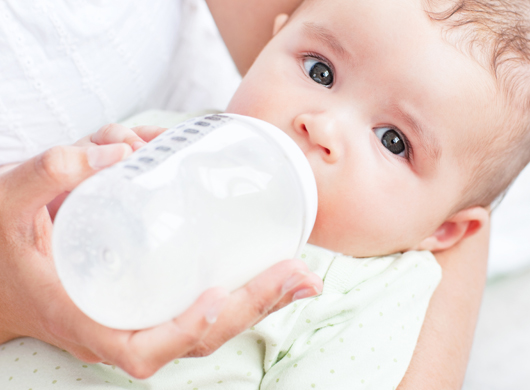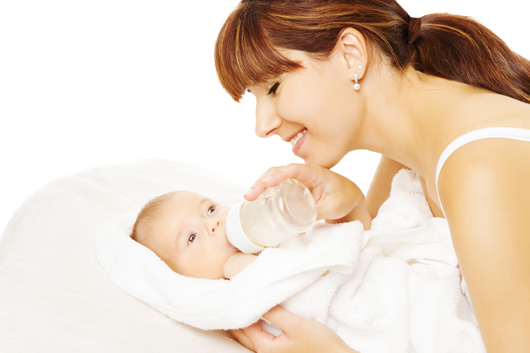What You Need to Know About Bottle Feeding Your Baby
When it comes to bottle feeding your baby, it’s imperative that you’re prepared with the right equipment before you get started.
Knowing how to care for that equipment is equally important for the long term health and development of your baby.
So if you are thinking about bottle feeding your baby, it’s advisable to start off with between 4 and 6 bottles – as a new mum you’ll be flat out and your baby will feed frequently so it’s important to ensure you always have a sterilised bottle ready to go.
Take one trip to the shops and you’ll notice there’s a vast array of baby bottles to choose from, so how do you choose?

According to registered nurse, midwife and child health nurse Jane Barry – also a baby feeding and wellbeing advisor to Phillips Avent – while the style of the bottle is up to individual taste, design and function is an important factor in how baby will respond at feeding time.
“Mums and dads will be bottle feeding many times throughout the day and night, so a design that suits both parents and baby is key,” says Barry.
“It will also make life a little easier for parents when it comes to storing and washing up the bottles.”
Make sure the bottle is easy to clean. A wide neck helps to accommodate a bottlebrush and/or dishwasher water to get into the bottle for thorough cleaning.
It’s also essential to ensure that the bottles you choose are BPA free (Bisphenol A), or alternatively you can use a glass bottle.
Choosing the right teat for the baby is also important to ensure the correct flow of milk.
“This means that when the baby feeds the nipple flexes to allow air into the bottle instead of the baby’s tummy,” says Barry.
“Parents will know when their baby is ready to move onto a faster flow rate because their baby will try to suck harder to get the milk more quickly.”
Most bottles provide an age-based guide to help you choose which teat to start with.
Keeping things clean
Poor cleaning of feeding equipment can lead to tummy upsets and diarrhoea, says Barry.
Steam sterilisation is quick and effective and there are a number of electric and microwave sterilisers on the market to choose from.
Remember to make sure the one you choose will comfortably fit your chosen bottles and accessories.
If you don’t have a steriliser you can do it the old fashion way by placing your equipment in boiling water.
Always thoroughly wash bottles and teats, ensuring no milk residue remains, before sterilisation.
“Once clean and sterile store the bottles, caps and teats in a clean, airtight container in the refrigerator.”

Preparing water
Ensuring water is property prepared is equally important for the safety of your baby.
Only use cooled, boiled water to prepare your baby’s formula.
“When preparing water, I recommend using tap water because it has fluoride in it and has been chlorinated,” says Barry.
“Bring the tap water to the boil. For kettles with an automatic shut off just bring to the boil and for other kettles 30 seconds of boiling is fine.”
You can boil the water, pour it into sterilised bottles and store these in the fridge until you’re ready to use them – they can be rewarmed prior to being used.
Only keep the water for 24 hours, after that you’ll need to replace it with freshly boiled water.
“It’s a hectic day in the life of a new parent and bottles may not get cleaned and sterilised adequately,” says Barry, which is why it’s important to have a few extras on hand.
“Storage and preparation at feeding time is very important to eliminate contamination.”

